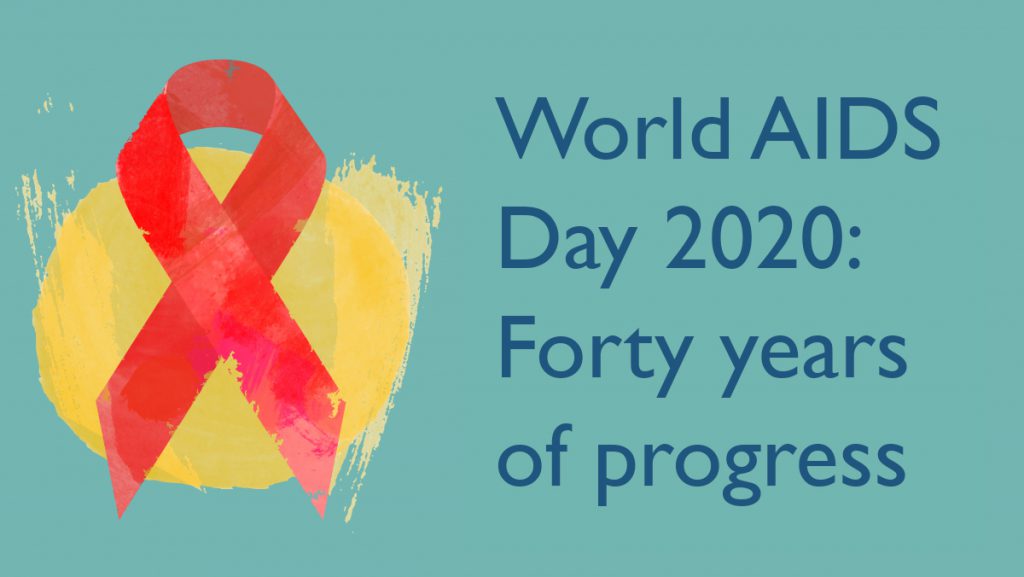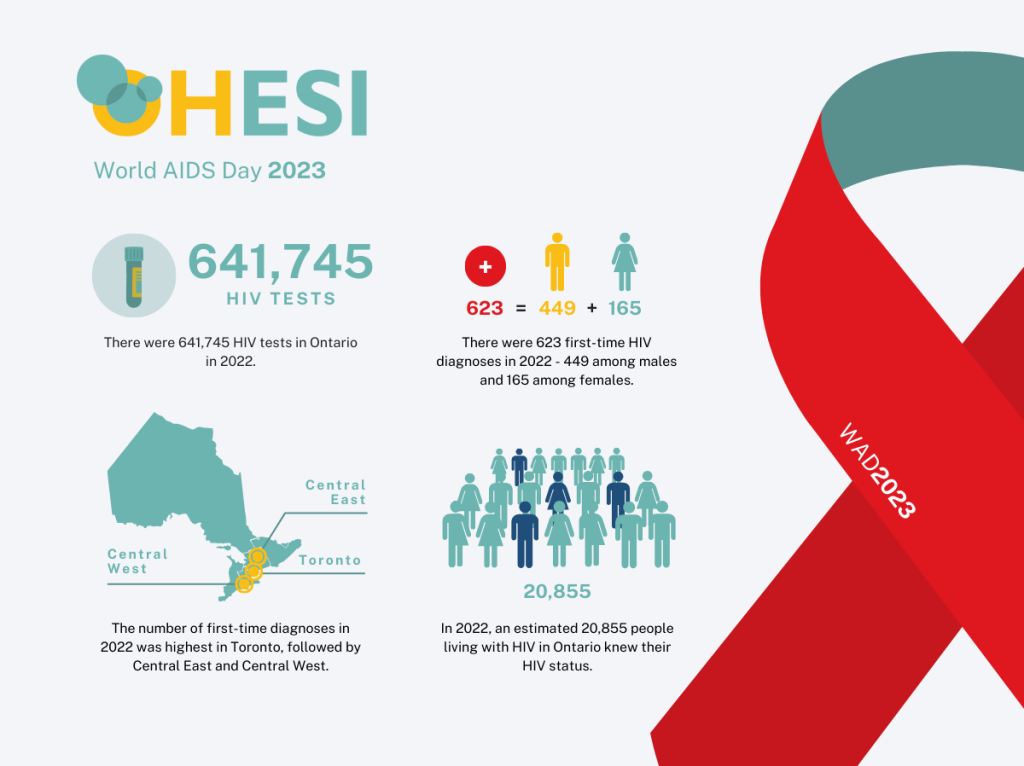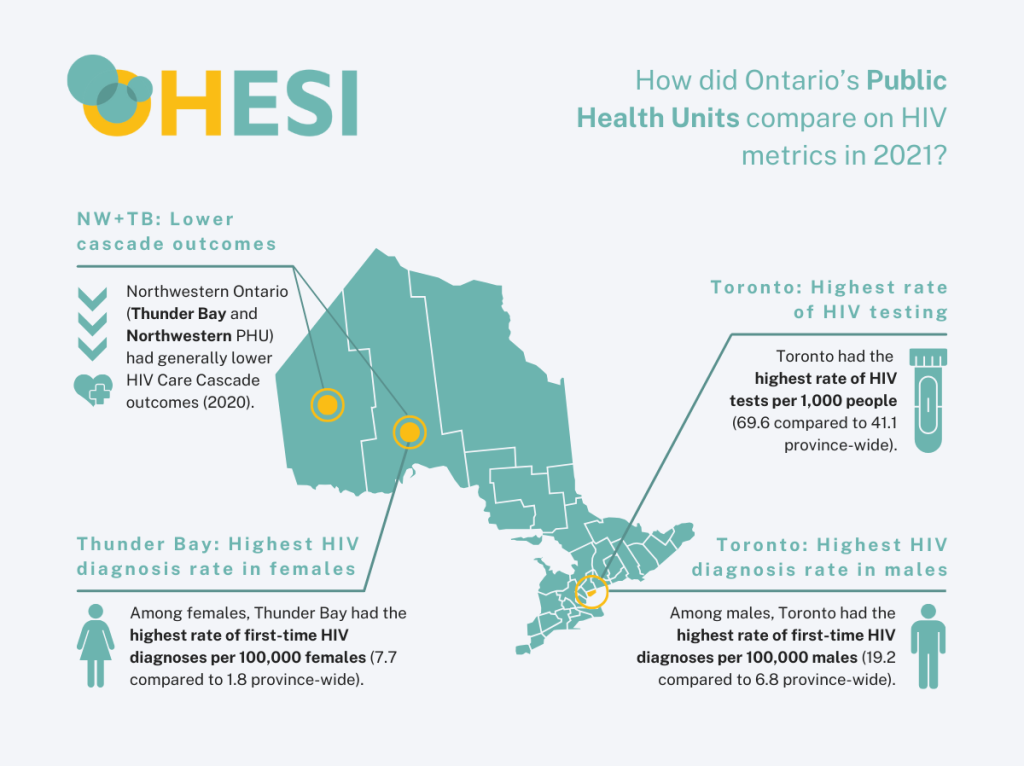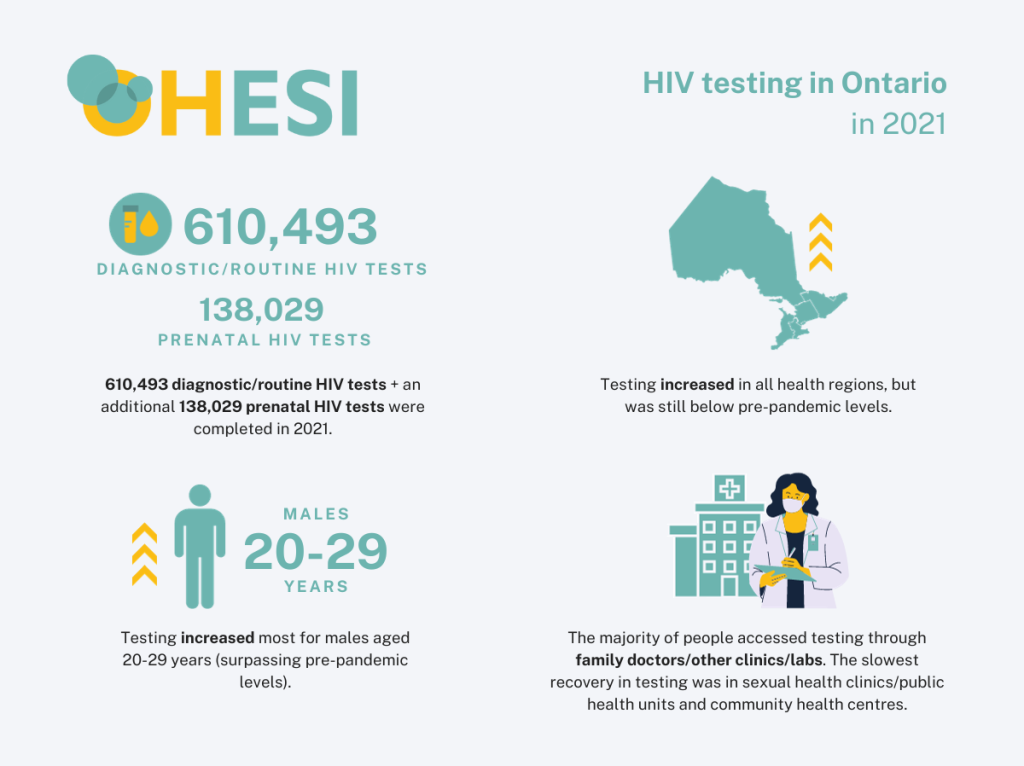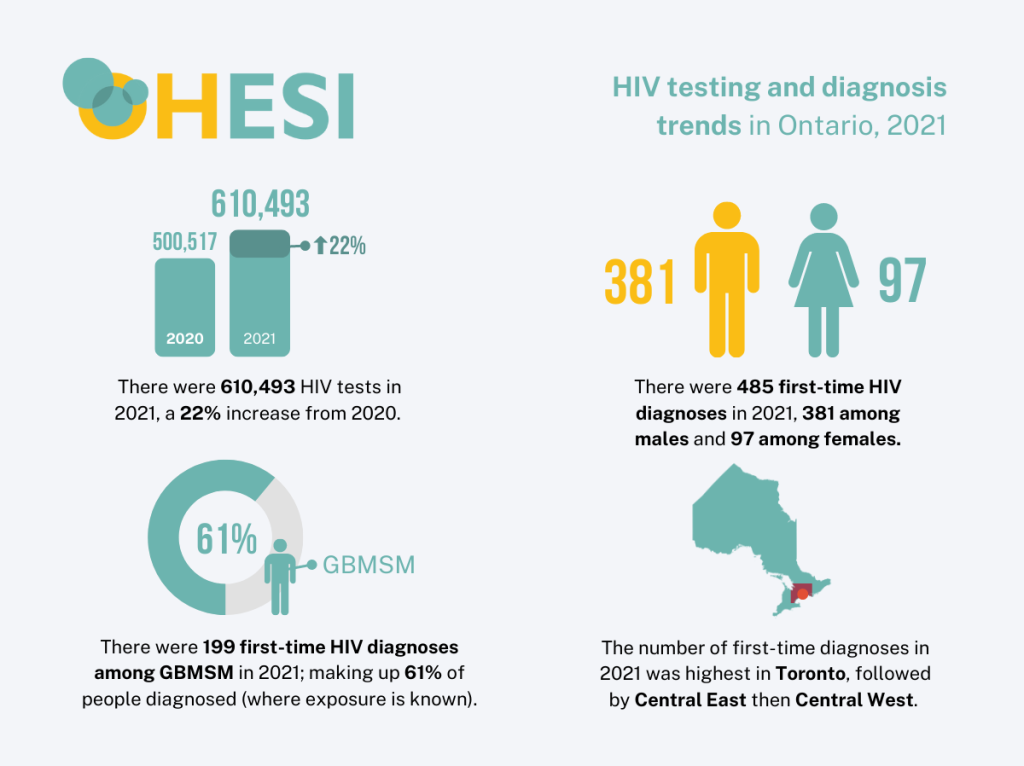Nov 27th, 2020
World AIDS Day 2020
On this World AIDS Day, OHESI remembers those who have lost their lives to HIV, and we recognize the efforts of our community to prevent HIV infection and improve the lives of people living with HIV.
Over the past 40 years, we have seen great progress in the effort to stop the spread of HIV. As a result of effective treatment, people living with HIV can now suppress the virus to undetectable levels, which means they can lead long healthy lives and cannot pass the virus to their sexual partners (undetectable = untransmittable or U=U). Due to the development of pre-exposure prophylaxis or PrEP, people can now take one pill a day to protect themselves from getting HIV.
To understand the impact of these prevention interventions, Ontario has refined its surveillance data to calculate the number of first-time diagnoses annually: this is our best indicator of the number of people who are learning their HIV status for the first time and were likely to have been infected in the province. In 2019, for the first time in more than a decade, we saw a decrease in both the number and rate of first-time HIV diagnoses among males in Ontario. In 2019, about 9,000 Ontario males were dispensed PrEP1, almost three times the number in 2018. This promising trend among males tells us that the combination of treatment (U=U) and PrEP are working to decrease local transmissions. More work is needed to further these gains, as females received only 2.5% of all dispensed PrEP in 20191.
In 2019:
- There were 687 first-time HIV diagnoses in Ontario, down from 738 in 2018.
- The rate of first-time HIV diagnoses per 100,000 people was 4.7, the lowest since 1986.
- There were 515 (7.2/100,000) first-time HIV diagnoses among males and 169 (2.3/100,000) first-time HIV diagnoses among females.
- This is the lowest number and rate of first-time HIV diagnoses among males since 1986.
- About three-quarters (75.3%) of first-time HIV diagnoses were in males and one-quarter (24.7%) were among females.
- Breaking down the percent of diagnoses by priority populations* and sex, 53.6% of first-time diagnoses were in gay, bisexual and other men who have sex with men, 15.1% were in African, Caribbean and Black males, 11.9% in African, Caribbean and Black females, 7.9% in males who inject drugs, 4.3% in females who inject drugs, 2.9% in Indigenous males and 2.0% in Indigenous females.
- Within the gay, bisexual and other men who have sex with men priority population, 15% of first-time HIV diagnoses were also identified as being part of the African, Caribbean and Black priority population.
By building on the successes of effective HIV treatment and PrEP, we can continue to drive down the number of new HIV diagnoses in Ontario and work to ensure that HIV prevention, testing and treatment are accessible to all Ontarians.
Sources: HIV diagnostic data from Public Health Ontario, HIV Datamart; 1: IQVIA Ontario pharmacy dispensation records.
Notes: First-time HIV diagnoses are those who are learning their status for the first-time in Ontario, excluding people already diagnosed out of province and repeat testing in Ontario. Due to missing data on test history, this number can be a slight overcount. The time of diagnosis does not tell you when a person acquired HIV (i.e. rate of diagnosis is not a direct proxy for incidence of infection).
*Priority populations are not mutually exclusive.

